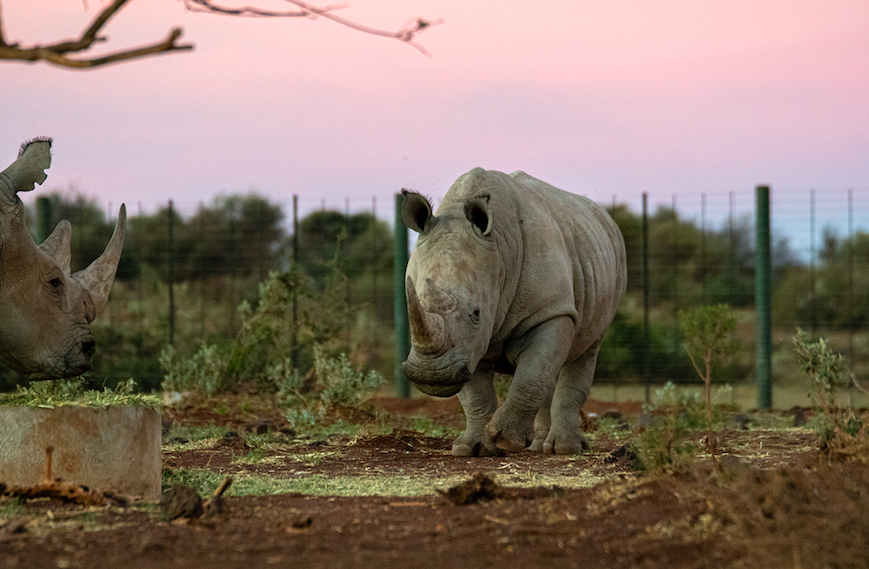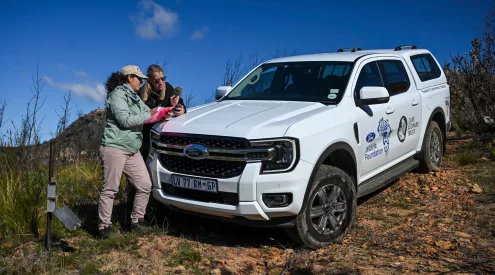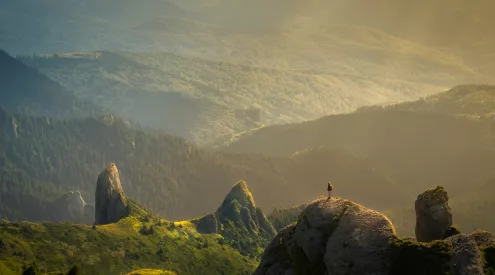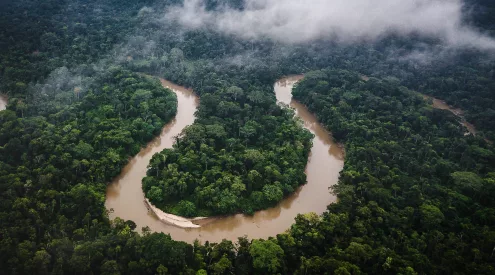It’s a sobering thought: If you’re raising a child today, they might never get the chance to marvel at the sight of a rhino at a national park in South Africa.
Why? A recent annual report by SANParks shows that Kruger has lost an alarming 70 percent of its rhino population in the last decade, however there is a small light at the end of the tunnel that could save the species.

From a population of around 10,000 white rhinos and 600 black rhinos in 2010, the numbers at Kruger are now down to approximately 3,549 white rhinos and 268 black rhinos.
Overall, in South Africa, 394 rhinos were poached in 2020, most of them in Kruger. If this trend continues, the entire rhino population currently protected by the country’s national parks might be wiped out by 2030.
Time is running out
The SANPark report’s data gives grave insight into just how little time we have left before the poachers win the war. It also highlights an even deeper concern: our national parks are simply not able to adequately protect rhinos – despite the millions of Rands they receive from government and international donors in support of rhino conservation.
They’re up against a mammoth task. Protecting rhinos is hard, dangerous and expensive. Rangers put themselves in the line of fire every day, some of them suffering the same deadly fate as the animals they guard. It doesn’t help that poachers are lured with huge sums of money by corrupt individuals working with illegal trade syndicates.
But what happens when there are no rhinos left in the national parks? The poachers won’t stop. They will simply turn their attention to the last surviving protected rhinos.
Why private rhino reserves might be the last hope for the species
Over the last 30 or 40 years, the percentage of privately owned versus state-owned rhino reserves has shifted. In South Africa there are approximately 330 private reserves and together, these reserves hold 50 to 70 percent of the country’s entire rhino population – with these numbers increasing while the state’s numbers decrease.
In contrast to national parks, private reserves experience very few poaching incidents. Only 37 of the 394 rhinos killed in South Africa in 2020 were on private reserves and often, their rhino birth rate is higher than the death rate, which is crucial in ensuring the survival of the species.
This alone is a triumph. But it’s even more significant when you consider that private reserves receive no government funding and only limited donations.
So why are private reserves having more success in rhino conservation than national parks? The private sector doesn’t like to lose whatthey’ve invested time, money and an endless amount of passion in.
The challenges for private rhino owners, and how they face these
In the past, privately owned reserves were able to sell an adult rhino to another reserve for around R750,000, but these days the amount has dropped to around R100,000. When you consider it costs approximately R500,000 to protect and nurture just one baby rhino from birth to breeding age, you start to understand the financial challenges they are facing.
The motivation for many private owners is passion for conservation and uplifting local communities, however, there also needs to be a way for them to earn income off their land. Owning rhinos needs to be sustainable, because for private owners, it’s all self-funded.
As the rate of poaching increases, costs also increase as security measures need to improve. The situation is exacerbated by severe drought conditions, which means trucking in tons of feed to supplement the natural grazing for rhinos. There’s also an emotional toll on staff and their families as they constantly face the threat of ruthless poachers. Poaching has forced them to incur security and ranger costs, rhino feed, veterinary care and more, needed to safeguard their animals.
Many hand rear baby rhinos whose mothers can’t look after them, which require specialised milk, care and supervision. They also pour money into research and repopulation efforts. Rockwood Conservation, for example has opened its doors to research that includes projects that study rhino milk nutrition and genetic diversity. Notably, Rockwood has collaborated with the Hemmersbach Rhino Force Cryovault project, led by some of the world’s top scientists, the project aims to create the largest genetic reservoir for Southern white rhinos in the world.
The fact is, that all of this is being done to protect and save the rhino with the hope of one day relocating rhinos into the wild or, at least, to wild reserves and parks. The harsh reality is that self-funding of private reserves can only take the species so far. How long before these private farms start to buckle under the burden of saving the species alone? Who will look after our rhinos then?
Picture: Supplied


















